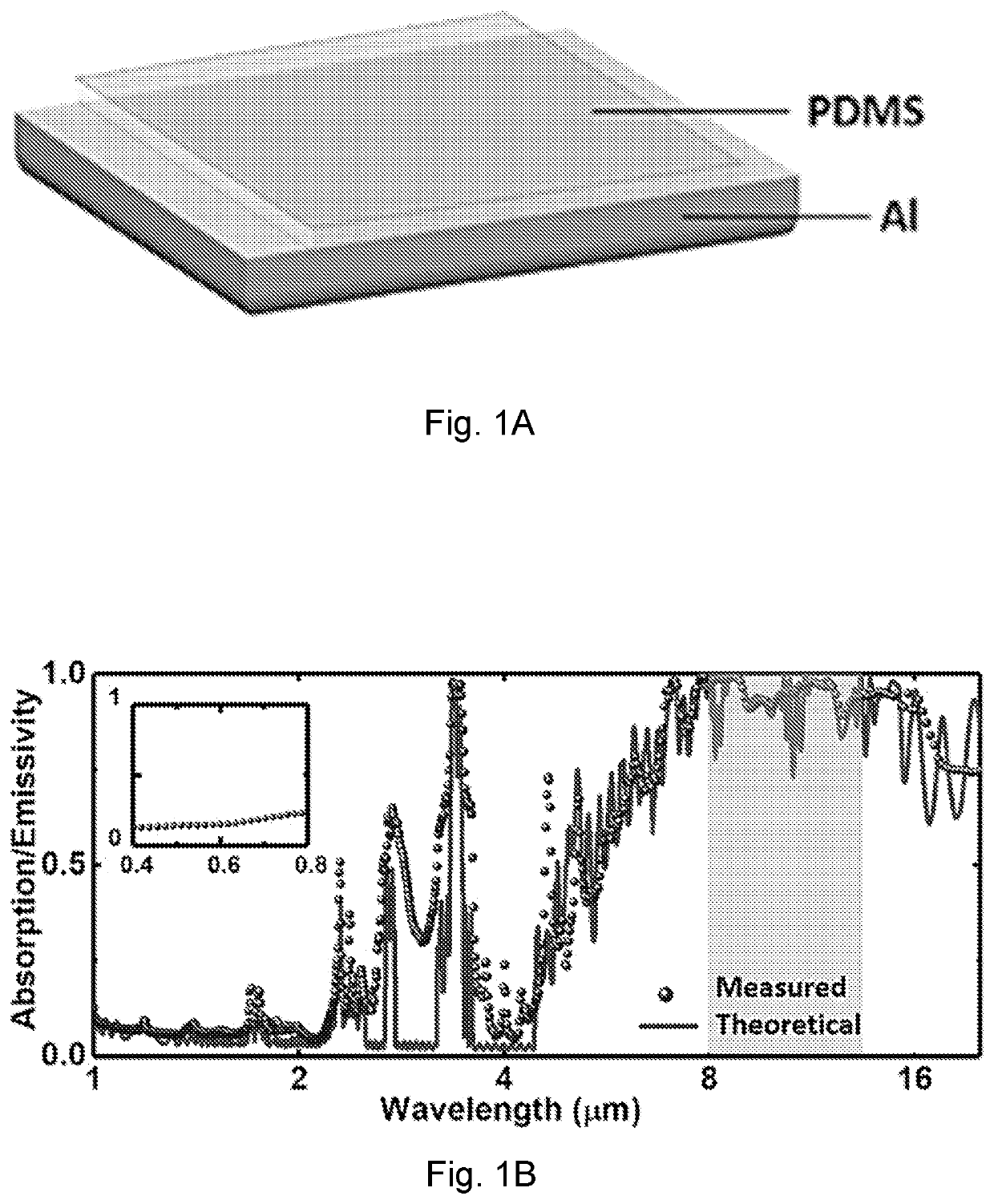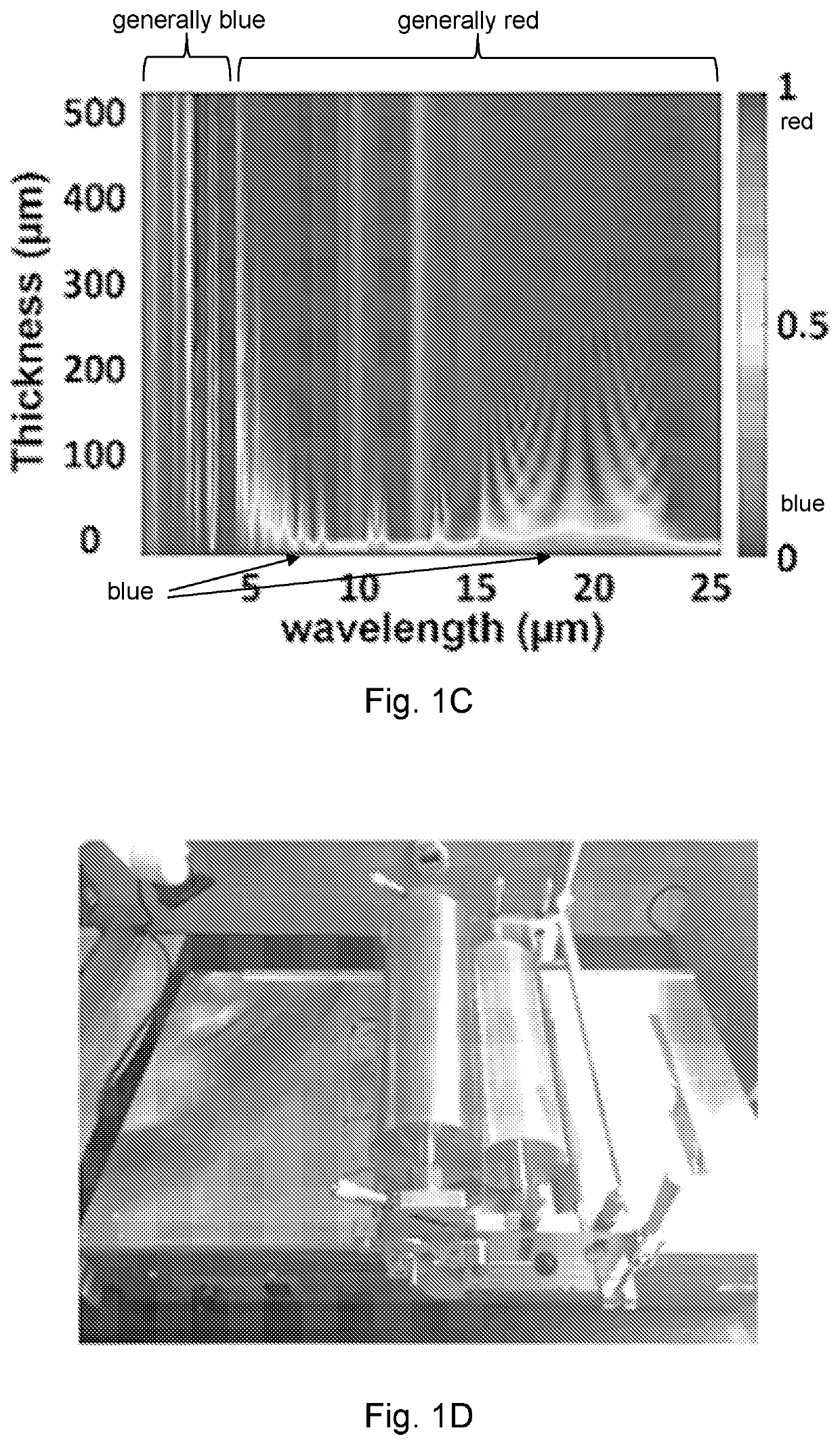Beam-controlled spectral-selective architecture for a radiative cooler
a radiative cooler and beam-controlled technology, applied in the field of passive radiative coolers, can solve the problems of significant impact on global energy consumption, achieve the effects of reducing the dependence of radiative cooling performance on the surrounding environment, reducing the consumption of electricity, and enhancing the directionality of thermal emission
- Summary
- Abstract
- Description
- Claims
- Application Information
AI Technical Summary
Benefits of technology
Problems solved by technology
Method used
Image
Examples
Embodiment Construction
[0062]In a first aspect of this disclosure, we describe an inexpensive planar Polydimethylsiloxane (PDMS) / metal thermal emitter thin film structure that is useful for efficient radiative cooling applications over large areas. By manipulating the beaming effect of the thermal radiation, a temperature reduction of 9.5° C. was demonstrated using liquid nitrogen as the cold source in the laboratory environment. In addition, since the usual thermal emission of the planar thermal emitter is omnidirectional, the radiative cooling performance is heavily dependent on the surrounding environment (i.e., the access to the open clear sky). Due to the enhance directionality of the thermal emission, the dependence of the radiative cooling performance on the surrounding environment was minimized. In addition, a spectral-selective solar shelter architecture was designed and implemented to suppress the solar input during the daytime. Outdoor experiments were performed in Buffalo N.Y., realizing conti...
PUM
| Property | Measurement | Unit |
|---|---|---|
| wavelengths | aaaaa | aaaaa |
| wavelengths | aaaaa | aaaaa |
| wavelengths | aaaaa | aaaaa |
Abstract
Description
Claims
Application Information
 Login to View More
Login to View More - R&D
- Intellectual Property
- Life Sciences
- Materials
- Tech Scout
- Unparalleled Data Quality
- Higher Quality Content
- 60% Fewer Hallucinations
Browse by: Latest US Patents, China's latest patents, Technical Efficacy Thesaurus, Application Domain, Technology Topic, Popular Technical Reports.
© 2025 PatSnap. All rights reserved.Legal|Privacy policy|Modern Slavery Act Transparency Statement|Sitemap|About US| Contact US: help@patsnap.com



